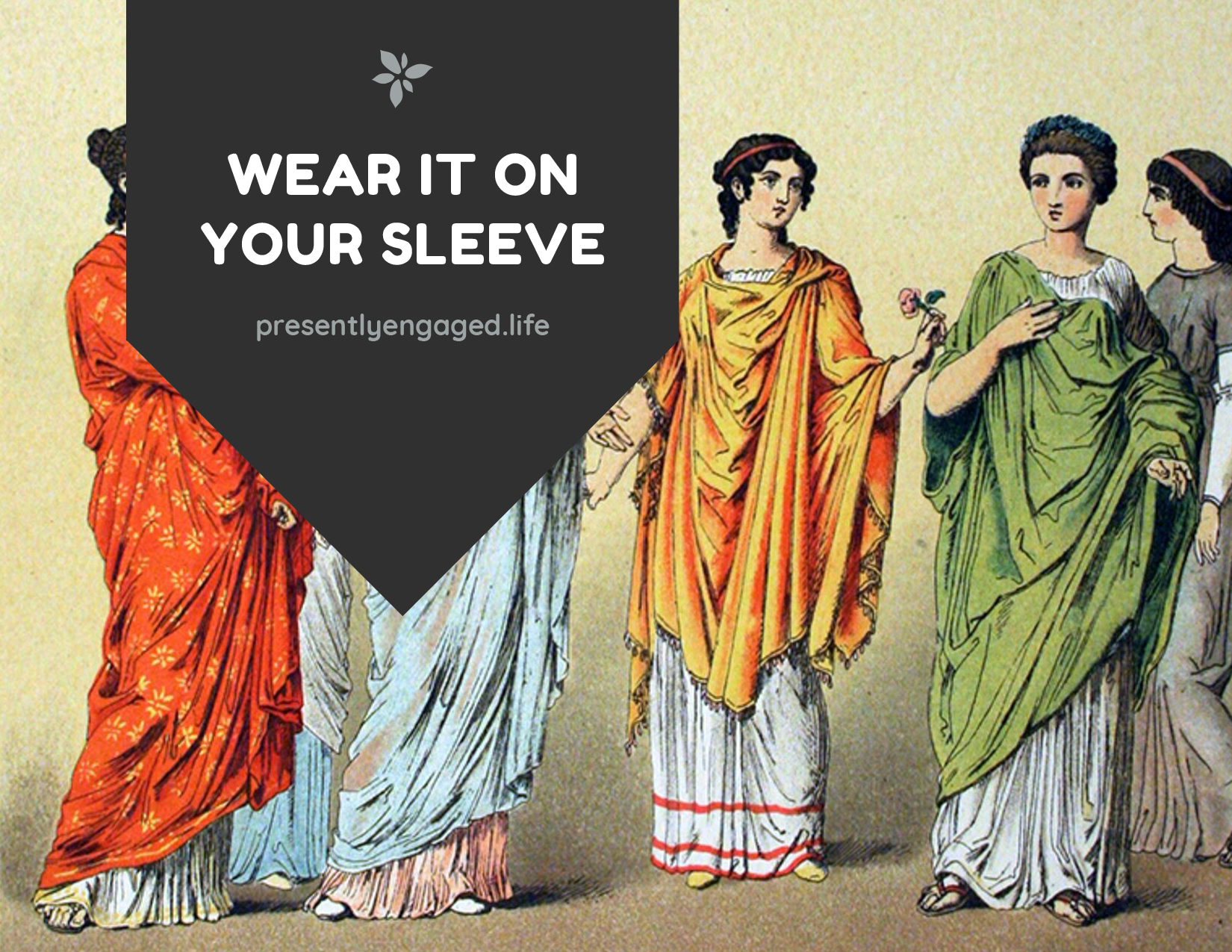This summer I finished the 752-page history of Rome, “Caesar and Christ” by Will Durant. It traces the history of the Roman civilization and the rise of Christianity from their beginnings to A.D. 325.
Full of fascinating history and interesting anecdotes, the book charts the stories of Commodus, Trajan, Hadrian, Tiberius and the rest like any good history should.
Now that the book is set aside and I’m on to my next read, one anecdote in particular sticks in my memory:
Beginning in about 215 B.C., Roman Sumptuary Laws were passed to prescribe and limit the display of wealth. They were designed, in part, to show the class and status of the populace of Rome. Initially, different classes were simply limited to how many different colors they could actually have on their clothing (peasants could wear only one color, soldiers could wear two, the royal family could wear seven colors).
As the years went by and Rome became more stratified, the rules became more and more specific. You could identify an individual by the style and color of the clothes they wore. Emperors wore purple. Patricians donned white. Senators wore a tunic with broad strips. Military men wore a shorter tunic. A general in a triumph would display a toga with a gold border. Priests and priestesses wore a white toga with a purple band. A black toga identified a mourner. Women, also, revealed their marital status, number of children, social class, and wealth by the cut and color of their stola and palla.
At one point in Roman history, Seneca recorded that there were plans to make all slaves wear the same style of clothing. Estimates vary, but slaves in Rome during Seneca’s lifetime (c. 4 B.C.–A.D. 65) represented anywhere between 30 and 40 percent of the entire population.
After discussion, however, the plans were abandoned for this reason: they feared that the slaves would then realize how many of them there actually were.
Brought from all corners of the empire and for all sorts of reasons, this huge percentage of souls living in Rome began to outnumber every other class of people.
Their masters were so dependent on their slaves that they placed themselves in constant risk of death or insurrection by a huge portion of the population. Slave revolts did indeed happen, but when a historian today looks back at the dependence on the evil institution of slavery the empire of Rome had in its latter days, we realize that slaves could have completely overthrown an empire.
A risky, costly, full-scale revolt by Rome’s slaves could have rewritten history. And if the slaves had indeed been forced to wear an identifying piece of clothing, that revolt may have happened.
Chances are, you will see another person today. Chances are, you’ll see several.
What if the people you see today identified themselves by their clothing?
Angry: Purple
Selfish: Yellow
Abused: Gold
Abuser: Red
Insecure: Pink
Immoral: Brown
Overwhelmed: Blue
Sorrowful: Black
Gossip: Green
What color would you be wearing today?
Whatever you put on this morning, you would be astounded by how many people you see today that would be wearing the same thing.
The strong emotions you feel, the huge battles you face—You are not alone. Though you may feel isolated and solitary, every person you see today, if they were honest, would share that they experience similar feelings and fears.
If Satan let people wear a garment identifying the fears, insecurities, and temptations that he planted in their lives, they would revolt. The enemy’s enslavement would become apparent, as people wear their battles on their sleeves.
It’s time to revolt. Bring it into the light. Wear it on your sleeve. Then rip it to shreds.
It’s time for a style intervention. I have a pair of shoes that my older—and more stylish—sister calls my “Mom Sandals.” As the completely unstylish and casual person that I am, I have fielded the question “Are you going to wear that?!” many times.
So here I am, lovingly critiquing your style choices.
That anger—are you going to wear that?
That insecurity—do you really want to wear it your whole life?
That moral failure—it definitely looks uncomfortable.
That fear—it’s not your color, you know.
When we verbalize our feelings and experiences in a safe place, to God and to God’s people, He gives the power to rip the wrong clothing to shreds. He gives us new clothing, a new identity, and a new name.
Is Jesus your Savior? Have you trusted Him for cleansing from sin, freedom from fear, a home for eternity, and abundant life here and now?
If so, you have new attire.
“But that is not the way you learned Christ!—assuming that you have heard about him and were taught in him, as the truth is in Jesus, to put off your old self, which belongs to your former manner of life and is corrupt through deceitful desires, and to be renewed in the spirit of your minds, and to put on the new self, created after the likeness of God in true righteousness and holiness” (Ephesians 4:20-24).
Yes, I keep anger and selfishness and insecurity in the back of my closet, right next to the jeans from my 20s I can’t fit into. There are times these things Velcro themselves to my clothes for the day. But I know the divine tailor, who clothes me in His righteousness, holiness, and security.
You are bought with a price. You are not your own. You are precious and delightful to your Savior. Put off anger, put off bitterness, put off falsehood. Put off gossip. Put on the Lord Jesus Christ and His truth today. And if you see someone wearing an uncomfortable style choice, maybe you can introduce them to your Source.
…Put off your old self, which belongs to your former manner of life and is corrupt through deceitful desires, and to be renewed in the spirit of your minds, and to put on the new self, created after the likeness of God in true righteousness and holiness. —Ephesians 2:22–24






